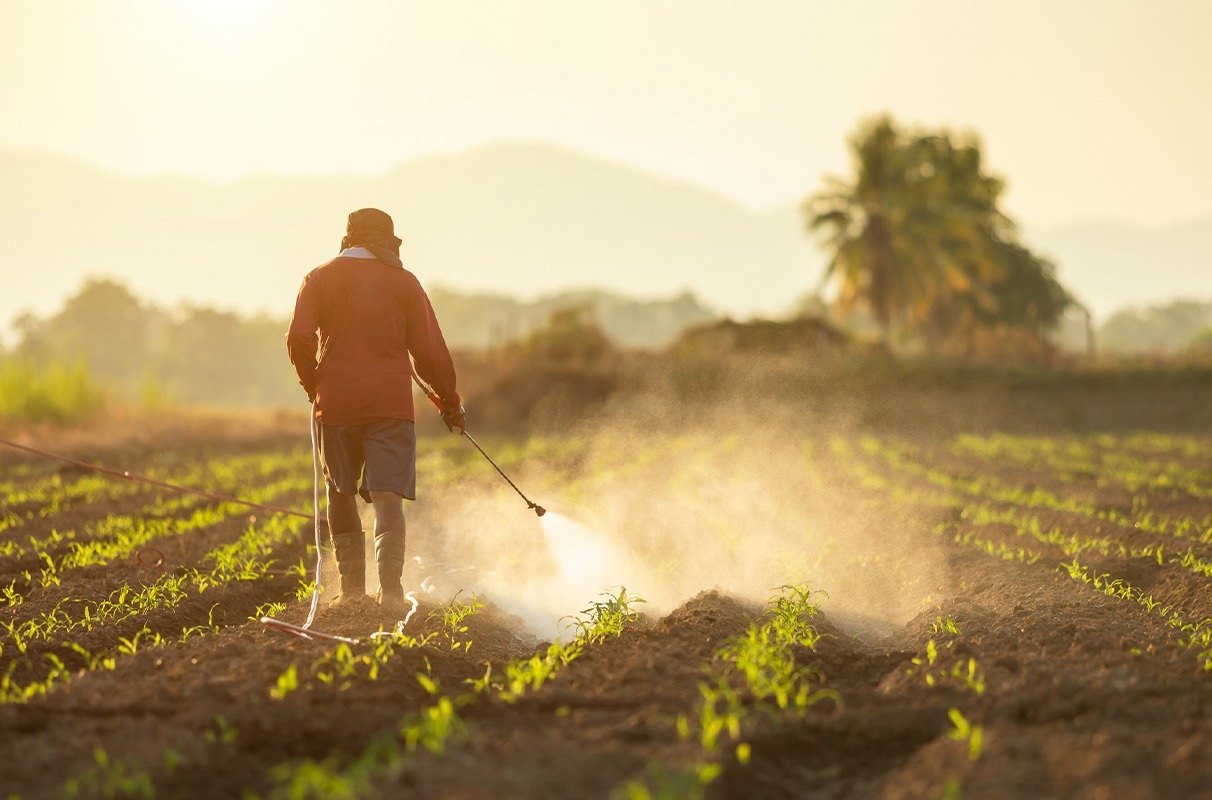Reviewed by Emily Henderson, B.Sc.Nov 2 2022
Two recently prepared, inexpensive tests that employ nanoparticles to identify chemicals can precisely quantify minute amounts of two potentially harmful herbicides in vegetables, fruits, and their products.
 The Food and Drug Administration (FDA) regularly tests a broad range of commodities for approximately 800 pesticide residues, and producers are required to keep the chemical residues on food below a certain level that is considered safe. Image Credit: Washington State University.
The Food and Drug Administration (FDA) regularly tests a broad range of commodities for approximately 800 pesticide residues, and producers are required to keep the chemical residues on food below a certain level that is considered safe. Image Credit: Washington State University.
A team of researchers from Washington State University used two testing techniques to quantify the levels of two herbicides, acetochlor, and atrazine, in samples of strawberries, apples, corn, cabbage, and fruit juices. The study demonstrates the real-world feasibility of their user-friendly and low-cost testing methods.
Details of their work have been reported in the journal Food Chemistry.
We applied this technology for real sample detection—which is an important step in moving toward commercialization.
Annie Du, Project Principal Investigator and Research Professor, School of Mechanical and Materials Engineering, Washington State University
The Food and Drug Administration (FDA) repeatedly tests a wide range of products for around 800 pesticide residues, and producers are stipulated to keep the chemical residues on food under a specific level considered non-toxic.
In the US, the two herbicides measured by the researchers are extensively used in crop production. They are possibly deadly for people at great concentrations and have been connected to various illnesses ranging from allergies and hormone disruption to cancer.
Performing the testing, however, necessitates advanced and costly tools and a skilled technician.
We want to come up with a low-cost method that can be used in the field or the laboratory.
Bernie Van Wie, Study Corresponding Author and Professor, Gene and Linda Voiland School of Chemical Engineering and Bioengineering, Washington State University
In the last few years, the team has created and patented their idea that employs platinum and palladium nanoparticles to magnify molecules' signals.
The nanoparticles adhere to an antibody, which identifies the chemical, and then triggers the creation of a signal. The magnification allows the scientists to know that minute quantities of the chemicals are present and their levels.
In this most recent work, the team used nanoparticles in two kinds of tests to quantify two concurrent chemicals. The chemicals were added to pureed vegetable and fruit samples in a mixer.
The palladium-platinum nanoparticles were used in one of the tests to catalyze a reaction that causes a color variation in a sample when the herbicide is detected. The test can be performed using a compact unit that can be taken into the field.
The other test developed by the team uses the nanoparticle in a cost-effective paper strip that resembles a pregnancy test or COVID-19 and can be read using a smartphone reader.
The tests were adequately sensitive to measure the chemicals to the maximum standard levels and corroborated using traditional testing techniques.
We’re actually able to detect below the maximum concentration limits. If there’s any pesticide or herbicide in the sample. That’s good because while this can be done by other methods, this method is low-cost and portable in the field.
Bernie Van Wie, Study Corresponding Author and Professor, Gene and Linda Voiland School of Chemical Engineering and Bioengineering, Washington State University
Du has recently opened a company discussing with WSU’s Office of Commercialization to license the technology for other applications. The study received support from the USDA/National Institute of Food and Agriculture (NIFA) Agriculture and Food Research Initiative (AFRI) program (grant number 2018-67021-27970).
Journal Reference:
Kwon, E. Y., et al. (2022) Simultaneous detection of two herbicides in fruits and vegetables with nanoparticle-linked immunosorbent and lateral flow immunoassays. Food Chemistry. doi.org/ 10.1016/j.foodchem.2022.133955.